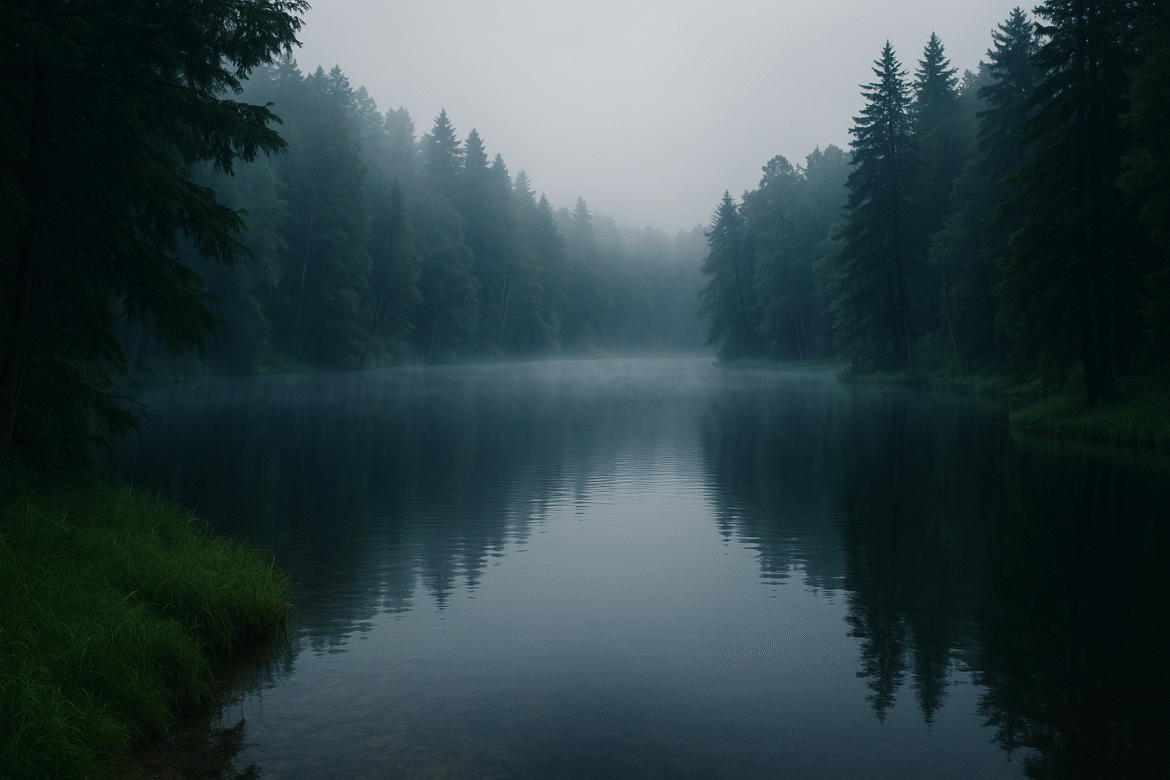Latvia is full of natural beauty, but it also hides chilling legends and mystical places. From haunted lakes to sacred hills, the country holds many mysterious and magical locations. One of the most famous is The Devil’s Lake, shrouded in ancient folklore and superstition. But that’s only the beginning. Across Latvia, supernatural stories connect locals deeply to the land. These legends are not just ghost stories—they reflect cultural and historical roots going back centuries. Even today, many people avoid certain places after dark or leave offerings for forest spirits. Whether you’re a believer or just curious, these supernatural sites in Latvia will fascinate you. Let’s uncover the eerie, the magical, and the unexplained—starting with Devil’s Lake.
The Devil’s Lake: Mystery in Apsuciems
Located near the village of Apsuciems, The Devil’s Lake (Velna ezers) lies surrounded by dense forest and misty mornings. Local legends say the lake formed after the devil himself fell from the sky during a holy battle. The water has an unusual shape—round, deep, and always cold, even in summer months. Some villagers believe the lake has no bottom, while others fear ancient curses lie beneath its surface. Small studies have found high levels of iron and strange magnetic patterns, yet scientists haven’t fully explained them. Despite rational attempts, the lake’s eerie silence and foggy mornings only fuel its legend. Even in daylight, Devil’s Lake feels like a place touched by something unknown. Here, the mystery lingers, weaving natural science together with local lore.
Key highlights of Devil’s Lake legend:
-
Formed during a battle between divine forces
-
Thought to have no bottom
-
Mysterious iron-rich waters
-
Surrounded by fog and local superstitions
Sacred Hills and Pagan Worship
Latvia is home to many sacred hills once used for pagan rituals and worship. Before Christianity arrived, ancient communities honored nature gods atop these high vantage points. Zilaiskalns, near Valmiera, remains one of the most famous of these sacred hills. People believe it exuded healing energy and spiritual power, especially during solstices and ceremonial events. Even today, some visitors leave flowers or coins as offerings to the hill’s guardians. Many locals report strange lights at night or the unsettling feeling of being watched. Archaeologists have uncovered fire altars, ancient tools, and animal bones near these sites, further adding to their mystique. Visiting Latvia’s sacred hills provides a powerful link to the country’s spiritual past, a place where the earth still speaks.
Spiritual practices once common at sacred hills:
-
Fire rituals during solstices
-
Offerings to nature spirits
-
Seasonal gatherings and ceremonies
-
Healing and meditation sessions
Pokaiņi Forest: Latvia’s Energetic Mystery
Just outside Dobele, Pokaiņi Forest is known for its dense woods and mysterious stone formations. Visitors have reported feeling energy shifts, sudden chills, or overwhelming calm in different parts of the forest. Electronics sometimes malfunction unexpectedly, even though no clear magnetic cause has been found. Folklore tells that Pokaiņi was once a sacred site for ancient healers or priests performing woodland ceremonies. Today, spiritual tourists come to meditate, seek energy healing, or simply connect with nature’s hidden power. The stones themselves remain unexplained—aligned paths and mysterious circles suggest something ancient and deliberate. The forest’s quiet presence and inexplicable formations keep local fascination alive. Pokaiņi continues to be Latvia’s most talked-about supernatural forest, shrouded in silence and myth.
Witch Stones and Cursed Boulders
Latvia’s landscape is dotted with large stones linked to supernatural stories and ancient curses. These witch stones, or cursed boulders, appear in villages across the country with tales of mystical powers. The Māra’s Stone in Kurzeme, for instance, is reputed to grant wishes if approached with respect and reverence. Meanwhile, the Great Devil’s Boulder near Talsi is rumored to bring misfortune to those who sit upon it. Villagers warn newcomers not to disturb these stones, especially after dark or during thunderstorms. In ancient times, people believed gods and spirits lived within these natural monoliths. Rituals still take place at some stones to ensure good harvests or healing. Contemporary visitors report tingling sensations or warmth when touching certain stones. Whether powered by energy fields or folklore, these mystical stones continue to captivate the imagination.
Famous witch stones in Latvia include:
-
Māra’s Stone – grants wishes
-
Devil’s Boulder – linked to misfortune
-
Velna akmens – site of mysterious rituals
Haunted Lakes and Sunken Legends
Several lakes in Latvia are believed to conceal sunken villages or churches, hiding layers of history and mystery underwater. One widely shared tale involves Lake Burtnieks, where legend says a village church sank after local people denied shelter to a beggar. On quiet nights, villagers claim they can hear church bells tolling from the depths. Other ghost lakes, like Lake Alūksne and Lake Jugla, share tragic stories and eerie sightings. Tourists and locals often report glowing lights, sudden mists, or whispering voices by these waters. Historical records confirm nearby old settlements, but the supernatural tales go far deeper into the unknown. These haunting lakes blur the line between documented history and enduring folklore. Such sites remind us that in Latvia, the water may carry more than just reflections.
Fairy Rings and Witch Circles
In many Latvian forests, mossy clearings often form circles where no trees grow, known as witch circles or fairy rings. Folklore claims these rings mark ancient ritual sites used for magical ceremonies or gatherings of spirits. Standing at the center of these circles is said to induce visions, great luck—or dreadful misfortune—especially during full moons. Parents and elders warn children to avoid these rings, particularly at night. Biologists attribute them to fungal growth, yet locals say there is an unmistakable energy there. Authentic circles are still treated reverently, with offerings of herbs or bread left on their edges. Some claim they’ve seen circles glowing faintly on moonlit nights. Whether natural phenomenon or enchanted portal, these eerie rings hold deep power in Latvian folklore.
The Whispering Grove Near Cēsis
Outside the medieval town of Cēsis lies a lesser-known grove often referred to as the Cemetery of Trees. Visitors say the forest hums softly at night, especially when fog drifts among the twisted trunks. The trees here grow in unnerving patterns, curving inward or bending toward a hidden center. Many believe a sacred grove once stood here, now overtaken by time and shadows. Locals whisper of strange curses, noting that even animals avoid the area under certain conditions. Visitors have reported disorientation: time seems to slow, goosebumps appear, and footsteps echo strangely. This eerie spot is unmarked on most maps and rarely visited by tourists. If you’re drawn by the supernatural, tread carefully—some say the spirits may still be watching, and the forest listens.
Latvia’s supernatural sites offer more than ghost stories or spine-tingling moments—they connect us to ancient beliefs and a living cultural landscape. Whether you visit The Devil’s Lake or tread quietly through a witch circle, you’ll sense layers of history under your feet. These places remind us that mystery still lives in a world dominated by facts and logic. Folklore remains alive in Latvia, whispered by elders and honored in silent groves. You don’t need to believe in spirits to feel their lingering presence in these places. But when mist veils a quiet lake, and the trees seem to lean in, you might just sense something beyond the familiar. So take a trip, explore the legends, and discover Latvia’s most magical, mysterious sites for yourself.

